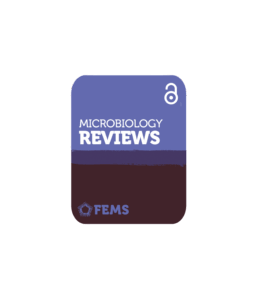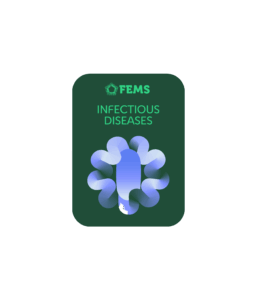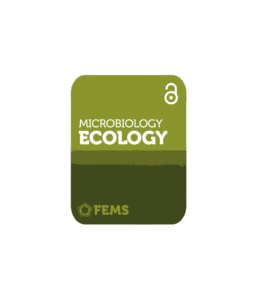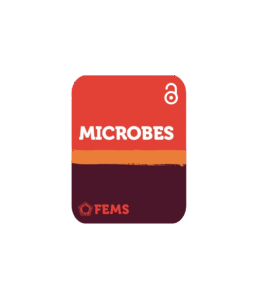As we pass the halfway mark of the year, it’s the perfect time to look back at the research that’s been making waves across our seven journals. These papers have sparked new discussions, inspired fresh lines of inquiry, and captured the attention of scholars, practitioners, and curious minds alike. Here are the five most read papers from each of our seven FEMS journals so far this year.
FEMS Microbiology Reviews

FEMS Microbiology Reviews publishes comprehensive, critical, and authoritative review articles on current and significant topics in microbiology. Reviews should offer fresh perspectives, address both specialists and general readers, and place findings within the broader context of microbiology and biology.
Explore how plant root exudates recruit and shape beneficial microbial communities, unlocking new strategies to boost plant health and crop productivity. Plant exudates-driven microbiome recruitment and assembly facilitates plant health management
Discover the hurdles holding back synthetic C1 metabolism in microbes and the strategies scientists are developing to turn carbon capture into a scalable biotechnological reality. Seven critical challenges in synthetic one-carbon assimilation and their potential solutions
Explore how filamentous fungi may use electrical signals to communicate across their networks, revealing a hidden layer of fungal biology with potential biotechnological applications. Electrical signaling in fungi: past and present challenges
Discover how extremophiles craft unique volatile compounds in harsh environments, offering untapped possibilities for biotechnology, environmental science, and even astrobiology. Extreme smells—microbial production of volatile organic compounds at the limits of life
Explore the complex antiphage defenses of Pseudomonas aeruginosa, revealing how this adaptable pathogen evolves to outsmart viruses and shape its own genome’s survival. Pseudomonas aeruginosa as a model bacterium in antiphage defense research
Pathogens & Disease (soon to be FEMS Infectious Diseases)

Pathogens and Disease (soon to be FEMS Infectious Diseases) publishes outstanding primary research on hypothesis- and discovery-driven studies on pathogens, host-pathogen interactions, host response to infection and their molecular and cellular correlates.
Explore how Vibrio cholerae persists in high-risk regions through environmental resilience, genomic adaptation, and climate impacts, and what strategies can curb its spread. Vibrio cholerae: Understanding a persistent pathogen in Sub-Saharan Africa and the East Mediterranean Region
Learn how gut-derived Candida albicans strains from IBD patients show distinct genetic and phenotypic patterns that may link fungal diversity to disease severity. Typing of feces-derived Candida albicans strains using a novel seven-locus microsatellite panel reveals associations with yeast phenotype in individuals with inflammatory bowel disease
Find out how Candida albicans β-glucans block Chlamydia trachomatis infection by triggering host immune pathways through C-type lectin receptor signaling. Dectin-1 stimulating β-glucans inhibit Chlamydia infections both in vitro and in vivo
Explore how different rat lungworm strains trigger distinct immune responses in rats, helping explain why the Ac13 haplotype is linked to more dog infections. Isolate-specific rat brain transcriptional responses to rat lungworm (Angiostrongylus cantonensis)
Learn how both low and high inflammation levels in HIV-negative patients with Pneumocystis pneumonia are linked to worse outcomes, suggesting a U-shaped risk pattern. Inflammatory phenotypes and clinical outcomes amongst patients with presumed and confirmed Pneumocystis jirovecii pneumonia without underlying human immunodeficiency virus infection
FEMS Microbiology Letters

FEMS Microbiology Letters publishes concise, high-quality papers across all areas of microbiology, including virology, with a focus on originality, broad interest, and rapid dissemination. It features sections on clinical microbiology, microbial physiology and genetics, food microbiology, biotechnology, pathogenicity, environmental microbiology, taxonomy and evolution, and professional development. The journal also includes MiniReviews, Commentaries, and Letters to the Editor.
Discover how soil health predicts the success of mycorrhizal fungi inoculation, with the greatest benefits seen in low-productivity, poor-quality fields. Mycorrhizal inoculation success depends on soil health and crop productivity
Discover how diverse, long-lasting prophages help Pseudomonas aeruginosa thrive in cystic fibrosis airways, enduring antibiotics and boosting the bacterium’s competitive edge. Pseudomonas aeruginosa maintains an inducible array of novel and diverse prophages over lengthy persistence in cystic fibrosis lungs
Meet Jeotgalicoccus and Pseudomonas strains that turn fatty acids into valuable 1-alkenes, paving the way for greener fuels and sustainable biocontrol solutions. Exploring 1-alkene biosynthesis in bacterial antagonists and Jeotgalicoccus sp. ATCC 8456
Explore how marsh plants and their environments shape the diversity and evolutionary makeup of root-dwelling fungal endophytes, revealing hidden patterns in community assembly. Environmental and host plant effects on taxonomic and phylogenetic diversity of root fungal endophytes
Discover how harmless Neisseria species can rapidly evolve antibiotic resistance, sharing genetic defenses with their pathogenic relatives and fueling the spread of hard-to-treat infections. In vitro evolution of ciprofloxacin resistance in Neisseria commensals and derived mutation population dynamics in natural Neisseria populations
FEMS Yeast Research

FEMS Yeast Research offers efficient publication of high-quality original Research Articles, Minireviews, Perspectives and Commentaries. The journal will select for publication only those manuscripts deemed to be of major relevance to the field and generally will not consider articles that are largely descriptive without insights on underlying mechanism or biology. Submissions on any yeast species are welcome.
Peek inside the microbial world of kombucha to uncover a consistent core of yeast and bacteria that drives its fermentation, no matter the starter’s origin or brewing style. Comprehensive survey of kombucha microbial communities of diverse origins and fermentation practices
Explore how engineered yeasts like Saccharomyces cerevisiae and Yarrowia lipolytica are being transformed into powerful cell factories, churning out sustainable fuels and high-value chemicals. Recent advances in genetic engineering and chemical production in yeast species
See how Komagataella phaffii is being retooled with advanced genetic, metabolic, and screening technologies to become a next-generation powerhouse for producing proteins, enzymes, and therapeutics. Advancing recombinant protein expression in Komagataella phaffii: opportunities and challenges
Discover how Saccharomyces cerevisiae is being probed and engineered to unlock the pathway for converting PET-derived ethylene glycol into valuable glycolic acid for sustainable recycling. Challenges in elucidating ethylene glycol metabolism in Saccharomyces cerevisiae
Learn how scientists are reprogramming Saccharomyces cerevisiae to bypass ethanol production, boosting yields of valuable chemicals while tackling the challenges of keeping the yeast growing strong on glucose. The advances in creating Crabtree-negative Saccharomyces cerevisiae and the application for chemicals biosynthesis
FEMS Microbiology Ecology

FEMS Microbiology Ecology aims to publish high-quality papers that are original and provide a significant contribution to the understanding of microbial ecology. The journal contains Research Articles and MiniReviews on fundamental aspects of the ecology of microorganisms in natural soil, aquatic and atmospheric habitats, including extreme environments, and in artificial or managed environments.
Explore how farming practices and land use shape fungal communities deep below the surface, revealing the hidden roles of subsoil fungi in plant health and carbon storage. Fungal communities in boreal soils are influenced by land use, agricultural soil management, and depth
Discover how tomato roots recruit beneficial microbes under low-nutrient conditions, boosting growth and revealing a microbial toolkit that could cut fertilizer use. Rhizosphere microbiome influence on tomato growth under low-nutrient settings
See how oral amoxicillin disrupts the gut microbiome and metabolism in rats without shifting gut redox balance, revealing limits to its impact on gut chemistry. Oral amoxicillin treatment disrupts the gut microbiome and metabolome without interfering with luminal redox potential in the intestine of Wistar Han rats
Learn how a custom-made growth medium, tailored to natural conditions, enabled the isolation of a new Gallionellaceae species and advanced cultivation of elusive iron-oxidizing bacteria. Custom-made medium approach for effective enrichment and isolation of chemolithotrophic iron-oxidizing bacteria
Discover how co-inoculating soybeans with Bacillus thuringiensis and rhizobia boosts plant growth and phosphorus cycling without disrupting the soil’s native microbial community. Co-inoculation with Bacillus thuringiensis RZ2MS9 and rhizobia improves the soybean development and modulates soil functional diversity
FEMS Microbes

FEMS Microbes is a dynamic new community journal dedicated to showcasing impactful research across microbiology and related disciplines. Designed as an inclusive platform, it champions the voices of early career scientists, both as authors and vital contributors to peer review. The journal welcomes direct submissions and transfers from other FEMS titles, featuring both full-length articles and short reports that advance the field and foster scientific collaboration.
See how H9N2 avian influenza reshapes the chicken respiratory microbiota, reducing diversity and shifting bacterial balance in ways that may influence immune responses and disease outcomes. Influenza a virus subtype H9N2 infection induces respiratory microbiota dysbiosis in chickens via type-I interferon-mediated mechanisms
Dive into Antarctic seas to discover bacteria living in marine invertebrates that show promise against drug-resistant pathogens and harbor genes for novel antimicrobial compounds. Psychrotrophic Antarctic marine bacteria as potential reservoirs for novel antimicrobial genes
Explore how aging weakens immune defenses against Toxoplasma gondii, making ocular toxoplasmosis more severe and vision loss more likely in older patients. Age and ocular toxoplasmosis: a narrative review
Discover how antibiotic-resistant Enterococcus from diverse sources form resilient biofilms, revealing troubling links between drug resistance and biofilm strength across the One Health spectrum. Comparative analysis of antibiotic resistance and biofilm formation in Enterococcus spp. across One Health domains
Learn how advances in imaging, experimental therapies, and collaboration between lab and clinic are driving progress toward better treatments for ocular toxoplasmosis. The importance of translational research in the study of ocular toxoplasmosis: insights from the 17th International Congress on Toxoplasmosis 2024
microlife

microLife is a gold Open Access FEMS journal associated with the European Academy of Microbiology (EAM). The journal publishes full-length research articles, short reviews, and commentaries reporting research of the highest standard, novelty, and significance in the field. microLife covers all aspects of microbiology. All microbes are covered including bacteria, archaea, fungi, protists, parasites, and viruses.
Discover how Salmonella’s tiny YjiS protein acts as a membrane-bound “timer,” slowing bacterial escape from immune cells and tuning its spread. Functional characterization of the DUF1127-containing small protein YjiS of Salmonella Typhimurium
Uncover how the Bacillus subtilis metabolite surfactin suppresses subtilosin A, revealing unexpected chemical cross-talk that shapes bacterial competition. Subtilosin A production is influenced by surfactin levels in Bacillus subtilis
Explore how a pristine Barents Sea oil reservoir harbors hydrocarbon-degrading microbes whose genes connect oil sites worldwide via ocean currents and deep aquifers. Metagenomic analysis of pristine oil sheds new light on the global distribution of microbial genetic repertoire in hydrocarbon-associated ecosystems
See how removing four active proviruses from Haloferax volcanii boosts motility, stress resistance, and alters gene expression, revealing their role in chronic infection. Provirus deletion from Haloferax volcanii affects motility, stress resistance, and CRISPR RNA expression
Discover two new players in Sulfolobus acidocaldarius’ UV-triggered DNA repair, UpsC and CedD, which are key to pili formation and DNA import during cell aggregation. New components of the community-based DNA-repair mechanism in Sulfolobales
Do you want to stay updated on publishing opportunities, insights from experts, novel research, and more? Sign up for our journals newsletter via this link.
